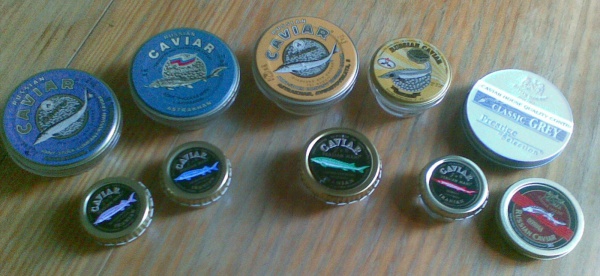Facts About Caviar
Caviar, a luxurious delicacy, is crafted from the salt-cured roe of sturgeon fish, specifically those belonging to the Acipenseridae family, predominantly found in the Caspian and Black Seas. Renowned for its refined flavor and texture, caviar is highly sought after and can be enjoyed either fresh or pasteurized. Traditionally, "caviar" refers exclusively to sturgeon roe, although in some regions, the term extends to roe from other fish species.
The quality and price of caviar are contingent upon the species of sturgeon and the production techniques employed. Nations such as China, Iran, Israel, Italy, Madagascar, Malaysia, Moldova, North America, Russia, Saudi Arabia, Spain, the United Kingdom, and Uruguay play significant roles in the caviar industry. Nonetheless, challenges such as overfishing, pollution, and illegal trade have jeopardized sturgeon populations, prompting stringent regulations and prohibitions to protect these species.
Caviar production encompasses several methods of roe extraction, including stunning the fish, performing a caesarean section, stripping, or massaging the fish. The preparation process involves extracting the ovaries, sieving, rinsing, salting, grading, and packaging the roe. Additionally, there are various caviar substitutes available, such as lumpsucker roe, roe from other fish species, seaweed-based caviar, and spherified liquids.
Given the perishable nature of caviar, it must be stored in a refrigerator. It is rich in nutrients like vitamin B12 and zinc but also contains high levels of cholesterol and salt. Proper storage and an awareness of its nutritional content are crucial for maintaining the quality of caviar and making informed dietary decisions.

 Uzbekistan
Uzbekistan